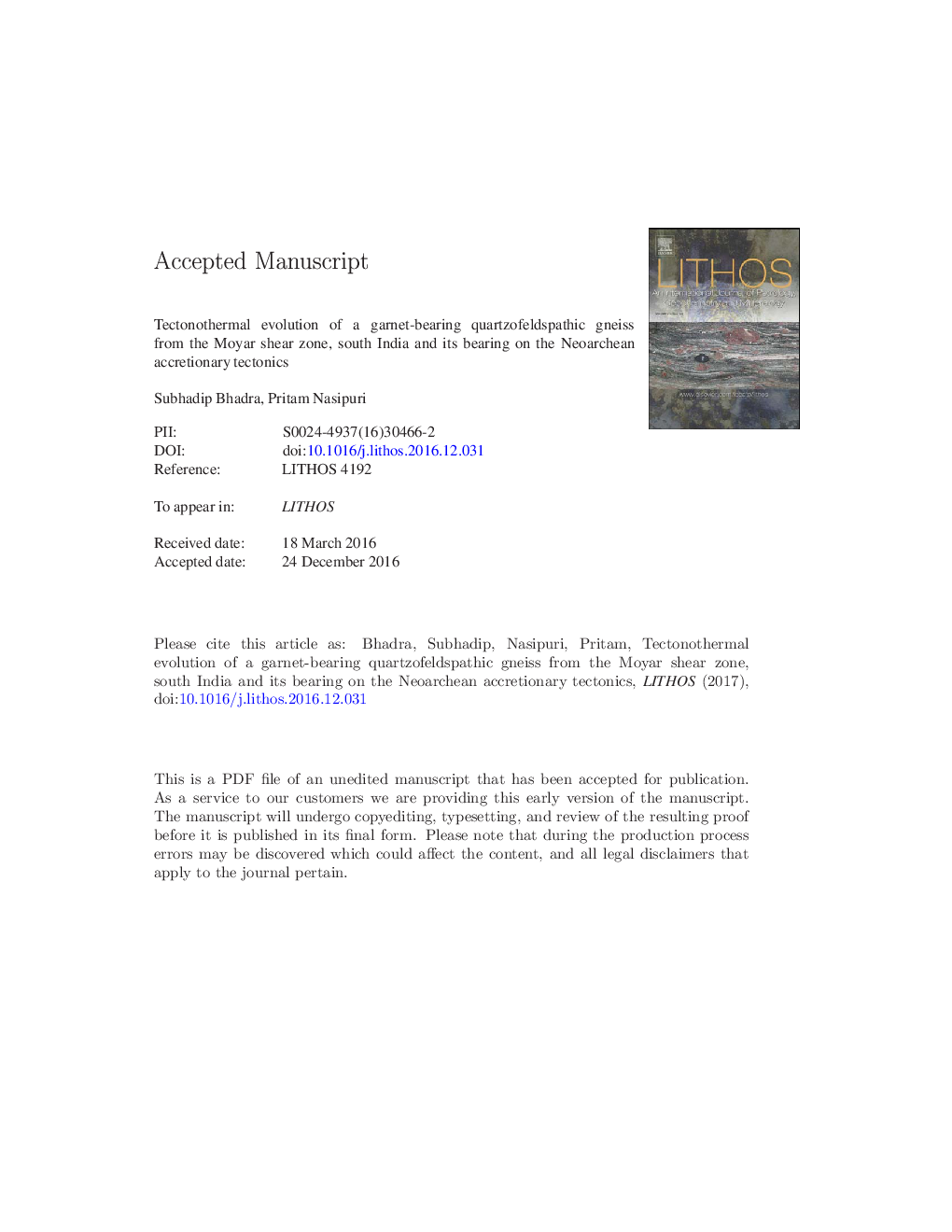| Article ID | Journal | Published Year | Pages | File Type |
|---|---|---|---|---|
| 5784268 | Lithos | 2017 | 64 Pages |
Abstract
We present mesoscale structural development across the Nilgiri Block and the flanking Moyar and Bhavani shear zones in south India, and detailed mineral-chemical and geothermobarometric studies of a garnet-bearing quartzofeldspathic gneiss from the easternmost part of the Moyar shear zone. Barring a narrow (< 100 μm) rim domain, major element distribution within garnet porphyroblasts reveals complete chemical homogenization. The absence of growth zoning in garnet porphyroblasts may suggest a protracted post-garnet growth residence period of the rock at elevated temperatures. Chemical zoning near garnet rim reflects the signature of both retrograde net-transfer (ReNTR) and retrograde exchange (ReER) equilibria. The ReNTR-equilibrium is recognized by prominent Mn kick-up in garnet, whereas the ReER-equilibrium is identified by divergence of Fe and Mg between garnet and biotite. Diffusion modelling, though qualitative, of the observed chemical zoning in garnet suggests an initial phase of rapid (~ 150 °C/Ma) cooling, which may have been achieved by tectonic-extrusion-induced exhumation. Pressure-temperature conditions for peak, ReNTR and ReER are constrained, respectively, at 900 °C; 9-11 kbar, 735 °C; 8 kbar and 685 °C; 7.8 kbar. Analyses of structural fabrics establish oppositely verging nature of the Moyar and Bhavani shear zone and may suggest a doubly vergent orogenic development, with the former as prowedge and the latter as retrowedge. The presence of the Nilgiri Block as a topographically elevated region between these oppositely dipping thrust faults indeed corroborates a doubly vergent orogenic setup. The tectonic scenario is comparable with a continent-continent collision type accretionary tectonics. Peak high-P granulite facies metamorphism and post-peak long residence period of the studied quartzofeldspathic gneiss at deep crustal level suitably fit into the Neoarchean crustal dynamics resulting in crustal thickening, in the order of ~ 41 km, within the Nilgiri Block.
Related Topics
Physical Sciences and Engineering
Earth and Planetary Sciences
Geochemistry and Petrology
Authors
Subhadip Bhadra, Pritam Nasipuri,
